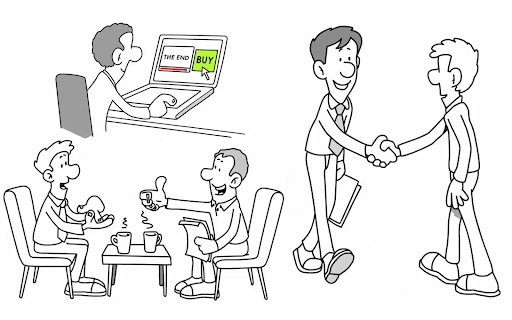You must have seen in recent times that many businesses and companies out there are opting for whiteboard animation using reliable whiteboard animation services. Do you know why it is becoming so popular and why it is considered to be an effective tool? Well, there is psychology behind it.
Understanding the psychology behind whiteboard animation helps us to get an idea of the amazing power that makes it an effective storytelling medium. There is no denying the fact that this unique form of visual communication makes use of the fundamental aspects of human cognition, making it not only an effective educational tool but also a very powerful way to engage as well as retain the attention of audiences across diverse topics.
So let’s not wait any longer and jump right into our blog post where we get an understanding of the psychology of whiteboard animation and why it works. Let’s get started!
The Brain’s Affinity for Visuals
At the core of whiteboard animation’s effectiveness lies the brain’s natural affinity for visuals. Research consistently shows that humans process visual information faster and more effectively than text. Whiteboard animations leverage this innate preference by combining visuals with narration, creating a dual-channel experience that enhances comprehension and retention.
When viewers engage with a whiteboard animation, they are not only hearing the information but also witnessing its visual representation being drawn in real time. This multisensory experience helps in creating a more profound connection with the content, as both auditory and visual cues work together to reinforce key messages.
The Power of Simplicity and Reducing Cognitive Load
Whiteboard animations are renowned for their simplicity. The uncluttered canvas, often black and white or minimally colored, contributes to reducing cognitive load. Cognitive load refers to the mental effort required to process information. By presenting information in a straightforward manner, whiteboard animations minimize cognitive strain, allowing viewers to focus on the core concepts being conveyed.
The step-by-step unfolding of ideas in whiteboard animations aligns with how the brain naturally processes information. Each stroke of the pen builds on the previous one, guiding the viewer through a logical sequence. This gradual progression not only aids understanding but also helps in organizing information into a coherent mental structure.
Narrative Engagement and Emotional Connection
The narrative element of whiteboard animations plays a crucial role in captivating and sustaining viewer attention. Human brains are wired to respond to stories. When information is presented in a narrative format, it activates areas of the brain associated with emotions and empathy.
Whiteboard animations often follow a storytelling structure, introducing a problem, presenting a solution, and guiding viewers through a journey. This format not only aids in information retention but also fosters an emotional connection with the content. Viewers become more invested in the narrative, increasing the likelihood that they will remember and relate to the presented information.
Dynamic Visuals and Kinesthetic Learning
The dynamic visuals created through whiteboard animation mimic the process of real-time creation, capturing and maintaining viewer interest. This dynamic aspect aligns with the concept of kinesthetic learning, which emphasizes hands-on or interactive experiences for effective understanding.
As viewers watch the drawings unfold, it simulates the sensation of actively participating in the creation process. This engagement contributes to enhanced learning outcomes, making whiteboard animations particularly effective for educational content. The combination of movement, narration, and visual representation creates a holistic learning experience that accommodates various learning styles.
Reduction of Psychological Barriers
Traditional educational materials can sometimes evoke psychological barriers, especially in complex subjects. Whiteboard animations, with their approachable and friendly visual style, help break down these barriers. The informal nature of the drawings and the conversational tone often used in narration creates a sense of accessibility.
This reduction of psychological barriers is particularly beneficial in educational contexts. It encourages learners to approach challenging topics with curiosity rather than apprehension. The visually inviting nature of whiteboard animations fosters an environment where viewers feel more comfortable exploring and understanding new concepts.
The Zeigarnik Effect: Curiosity in Action
The Zeigarnik Effect, a psychological phenomenon named after psychologist Bluma Zeigarnik, suggests that people tend to remember uncompleted or interrupted tasks better than completed ones. Whiteboard animations leverage this effect by presenting information in a sequential, step-by-step manner.
As viewers watch the animation unfold, the incomplete visuals create a sense of curiosity and a natural desire to see the entire picture. This anticipation keeps viewers engaged and attentive, driving them to stay until the conclusion of the animation. Whiteboard animations cleverly harness the Zeigarnik Effect, turning it into a tool for maintaining audience interest throughout the presentation.
Final Thoughts
So this was all about the psychology behind whiteboard animation. You can use it for educational purposes, marketing, or storytelling. No matter what it is used for, the psychological principles at play in whiteboard animation contribute to its widespread success.



